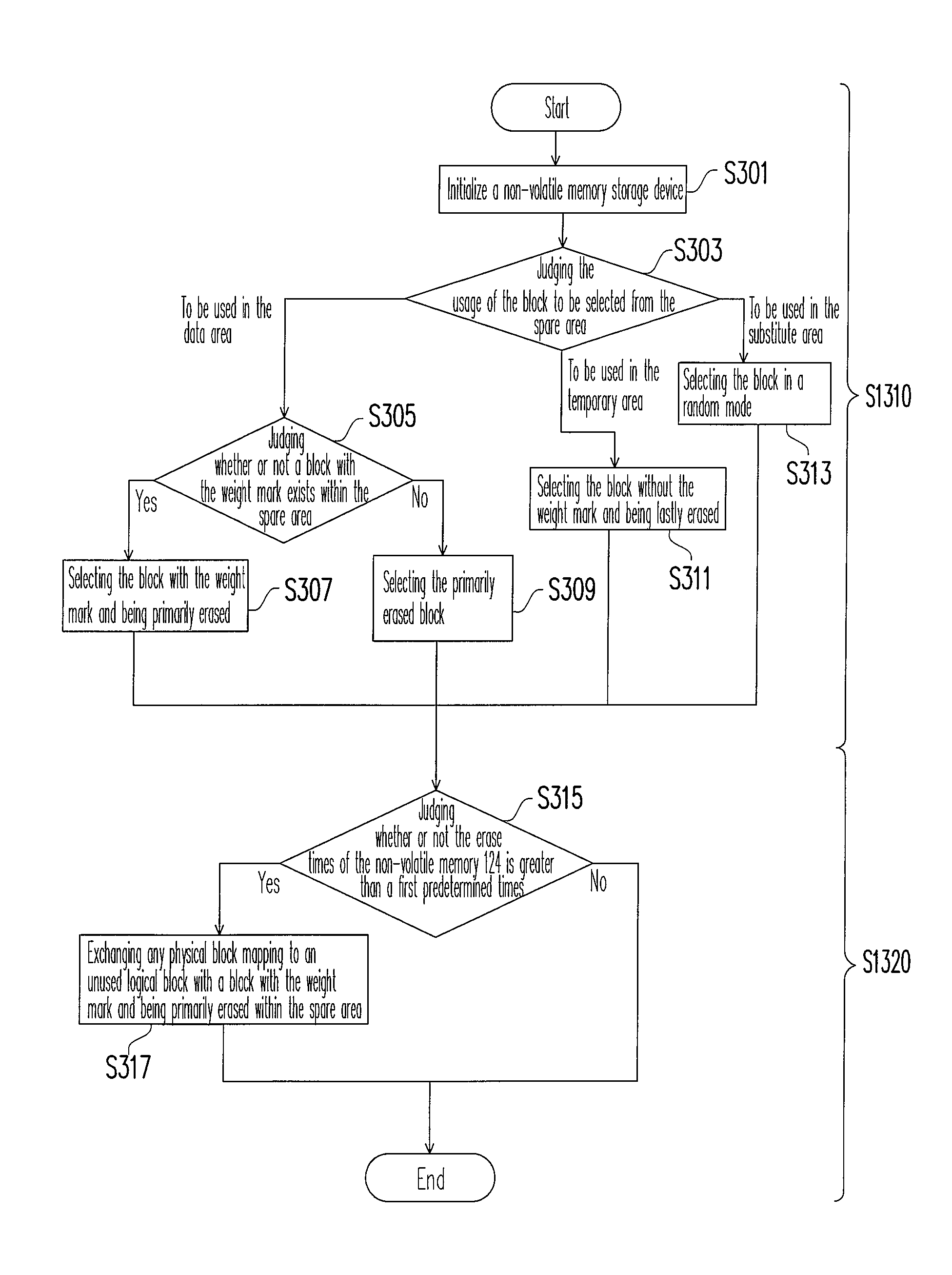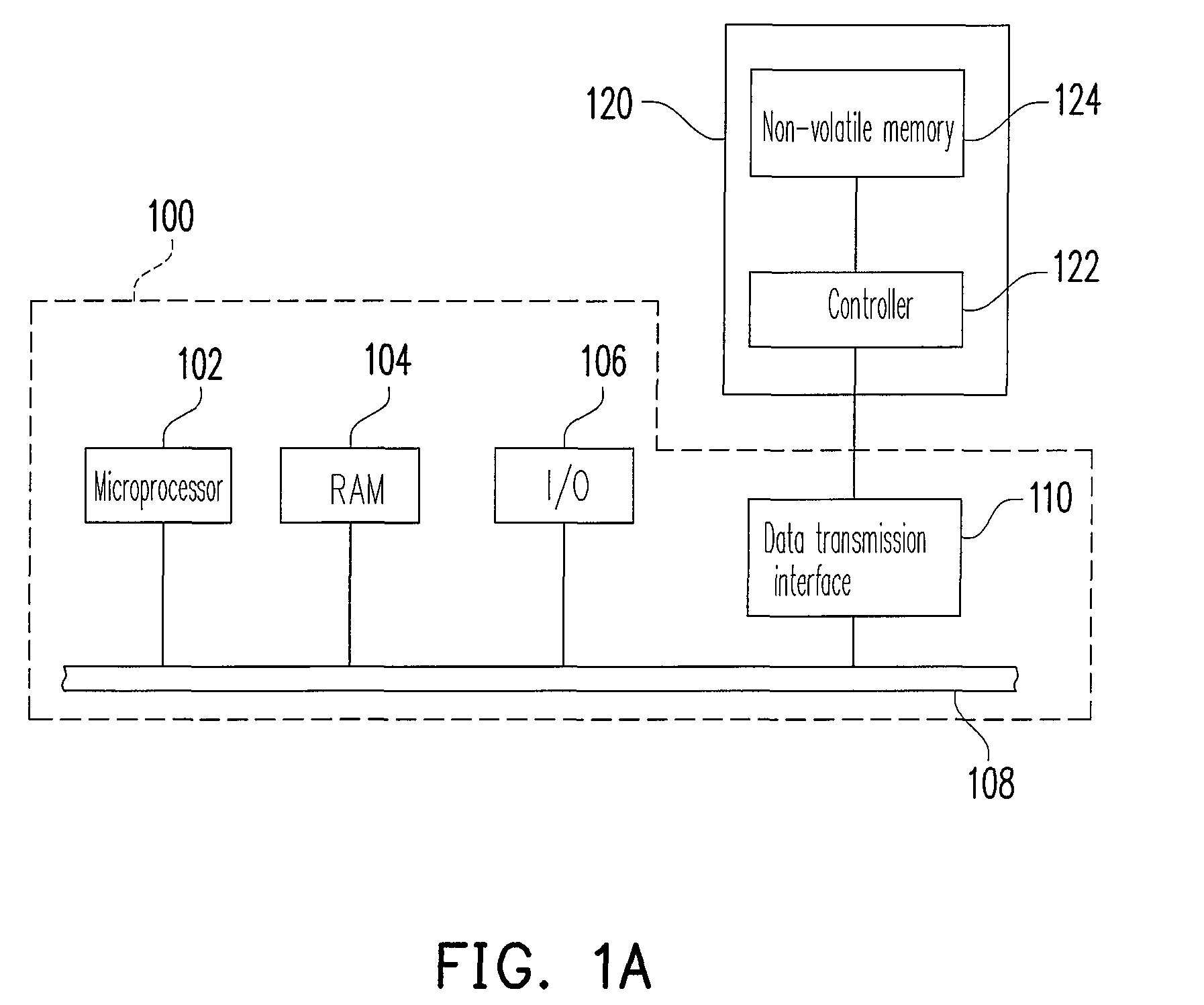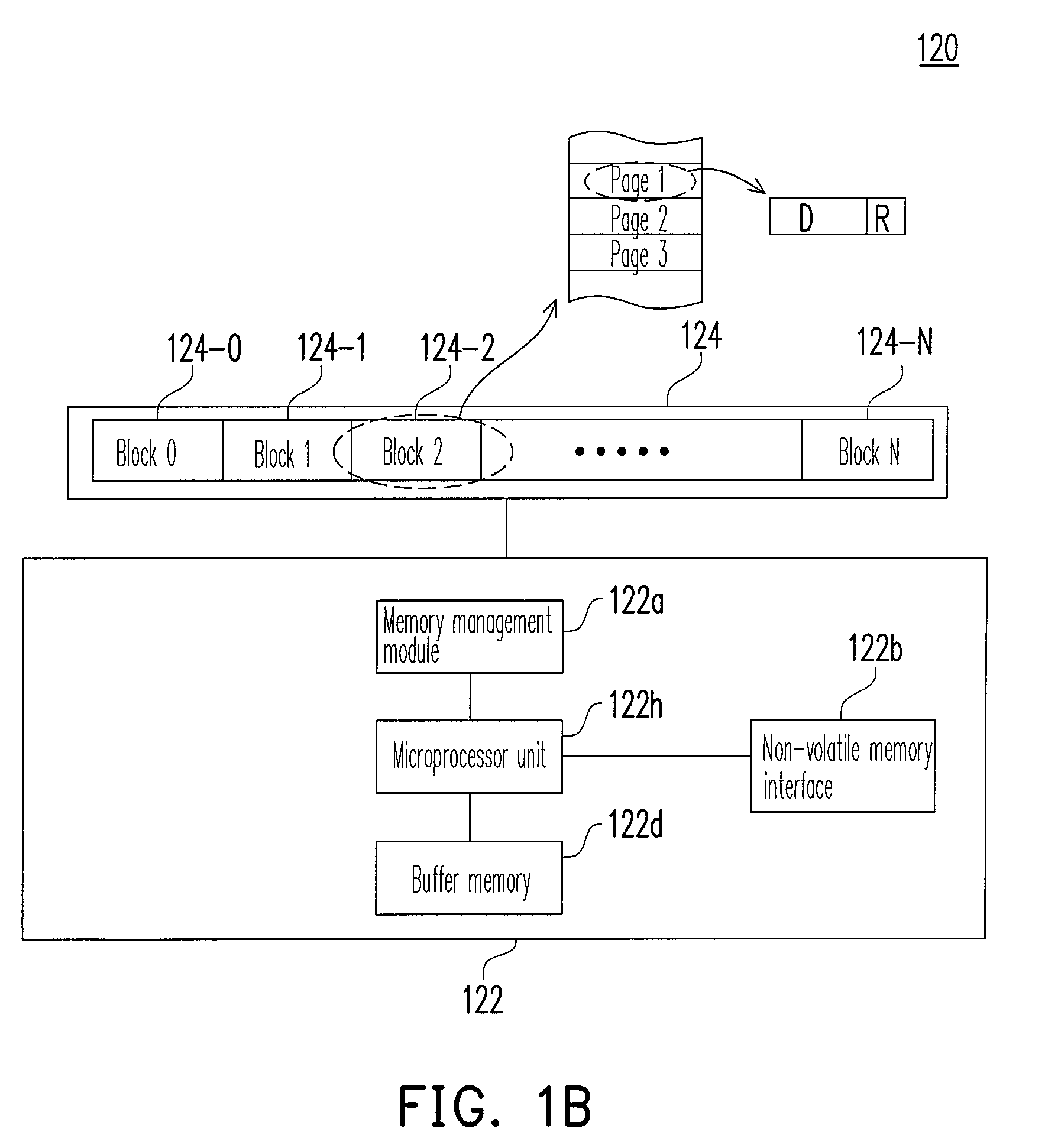Wear leveling method and controller using the same
a leveling method and controller technology, applied in the direction of memory adressing/allocation/relocation, instruments, computing, etc., can solve the problems of data loss, block wear, and limited erase times of blocks in flash memory, so as to effectively level wear of memory blocks and prolong the life of memory
- Summary
- Abstract
- Description
- Claims
- Application Information
AI Technical Summary
Benefits of technology
Problems solved by technology
Method used
Image
Examples
first embodiment
The First Embodiment
[0030]FIG. 1A is a diagram illustrating a host using a non-volatile memory storage device according to the first embodiment of the present invention.
[0031]Referring to FIG. 1A, the host 100 includes a microprocessor 102, a random access memory (RAM) 104, an input / output (I / O) device 106, a system bus 108 and a data transmission interface 110. It should be understood by those skilled in the art that the host 100 may further include other devices such as a display device or a network device etc.
[0032]The host 100 may be a computer, a digital camera, a video camera, a communication apparatus, an audio player, or a video player etc. Generally, the host 100 may be any system that may store data.
[0033]A non-volatile memory storage device 120 of the present embodiment is electrically connected to the devices of the host 100 via the data transmission interface 110. By processing of the microprocessor 102, the RAM 104 and the I / O device 106, data may be written into the n...
second embodiment
The Second Embodiment
[0078]In the second embodiment of the present invention, the hardware structure, operation of the non-volatile memory, erased sequence of the blocks and recording of the weight mark are all the same to that of the first embodiment (shown as FIGS. 1A-1B, FIGS. 2A˜2D, FIG. 4), the detailed description thereof will not be repeated. The difference between the second embodiment and the first embodiment is that in the second embodiment, different rules are only applied to a block selection by which the selected blocks are used for the substitute area and the data area.
[0079]FIG. 5 is a flowchart of a wear leveling method according to the second embodiment of the present invention. Referring to FIG. 5, the flowchart of FIG. 5 is similar to that of FIG. 3, except that different method of the block selection (step S1310′) is only applied for the selected blocks used for the data area 204 and the substitute area 208, the detailed description thereof will not be repeated.
third embodiment
The Third Embodiment
[0080]In the third embodiment of the present invention, the hardware structure, operation of the non-volatile memory, erased sequence of the blocks and recording of the weight mark are all the same to that of the first embodiment (shown as FIGS. 1A˜1B, FIGS. 2A˜2D, FIG. 4), the detailed description thereof will not be repeated. The difference between the third embodiment and the first embodiment is that in the third embodiment, different rules are only applied to a block selection by which the selected blocks are used for the substitute area and the temporary area.
[0081]FIG. 6 is a flowchart of a wear leveling method according to the third embodiment of the present invention. Referring to FIG. 6, the flowchart of FIG. 6 is similar to that of FIG. 3, except that different method of the block selection (step S1310″) is only applied for the selected blocks used for the temporary area 210 and the substitute area 208.
[0082]According to the first, the second and the th...
PUM
 Login to View More
Login to View More Abstract
Description
Claims
Application Information
 Login to View More
Login to View More - R&D
- Intellectual Property
- Life Sciences
- Materials
- Tech Scout
- Unparalleled Data Quality
- Higher Quality Content
- 60% Fewer Hallucinations
Browse by: Latest US Patents, China's latest patents, Technical Efficacy Thesaurus, Application Domain, Technology Topic, Popular Technical Reports.
© 2025 PatSnap. All rights reserved.Legal|Privacy policy|Modern Slavery Act Transparency Statement|Sitemap|About US| Contact US: help@patsnap.com



